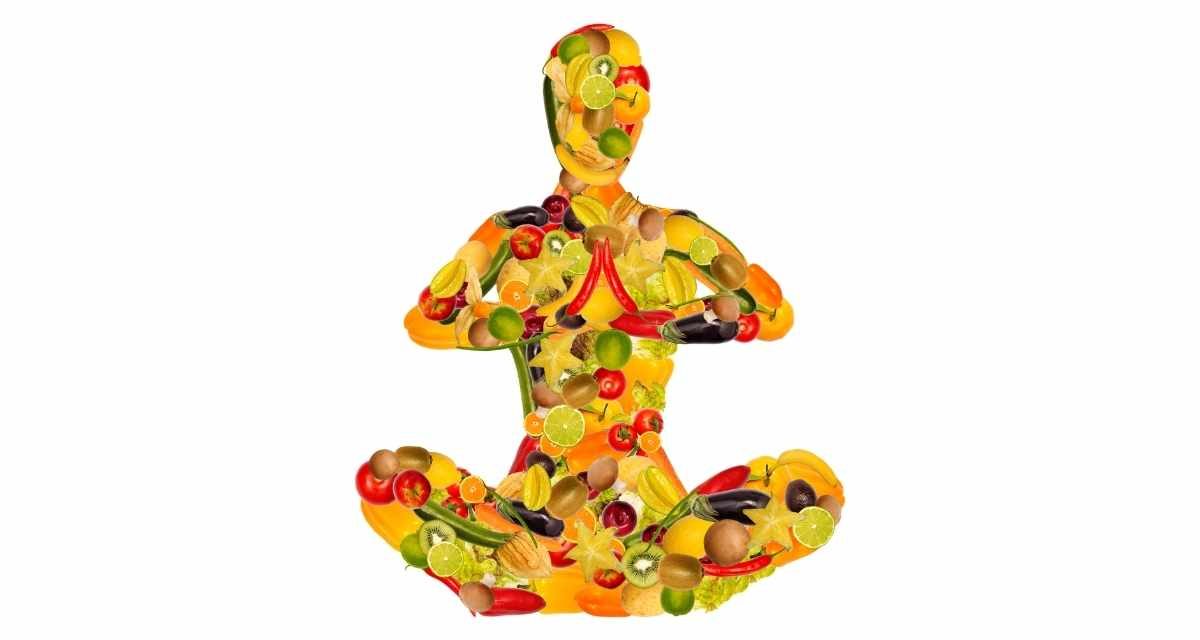The Vedas provide a wealth of information on Ayurveda Food. Accordingly, conventional foods and their dietary recommendations are recommended in Ayurveda. Ayurveda Food and conventional diets are so similar that many of the traditional health foods in India can be referred to as ayurvedic foods. Let us analyze as to what do the Vedas say about food?
In this review report, the principles of ayurvedic health foods in India are introduced and many conventional health foods are defined in different regions of India. There are three major food types. The types of stupidity, passion and kindness are foods. The perfect and highest Vedic quality is to cook foods with love and dedication in the group or style of goodness that will then be given. This is normally done to the deities at the home altar, or fitting devotional images and by adding leaves of Tulasī to the offerings.
Foods dear to those in the mode of goodness increase the duration of life, purify one’s existence and give strength, health, happiness and satisfaction. Such foods are juicy, fatty, wholesome, and pleasing to the heart. The Vedic texts have verses that have been translated by scholars to mean either acceptance or resistance to food dependent on meat.
Early Vedic texts, such as the Rigveda, denounce all killings of animals, cattle and horses, and appeal to the god Agni to punish those who attack. The Shatapatha Brahmana denounces as a sin the eating of beef from cows and oxen. “rice, barley, bean, and sesamum”rice, barley, bean, and sesamum. Accordingly, vegetarianism has been a well-accepted modern Hindu practice since ancient times.
The Upanishads form the foundation of Vedanta, which is considered the pinnacle of Hinduism’s Vedas and metaphysical paradigm, and advocate the abstention from harming living beings, advocating ahimsa as a redemption or enlightenment imperative. Hinduism’s Upanishads and Sutra texts mention moderate diet and proper nutrition, as well as Aharatattva.
In matters of Ayurveda Food, the Upanishads and Sutra texts evoke the notion of virtuous self-restraint, whereas the Samhitas address when and when such foods are necessary. A few Hindu texts incorporate them, such as Hathayoga Pradipika. Diet moderation is called Mitahara, and in Shandilya Upanishad, as well as Svātmārāma as a virtue, this is addressed. In ancient Indian writings, it is one of the Yamas (virtuous self-restraint) that it is discussed.
Ayurveda is a 6000-year-old system of health treatment that maintains that science, philosophy, and spirituality are all essential components of a healthy lifestyle. Ayurveda is regarded as more than a complete medical system; it is also regarded as a way of life. Individuals are inextricably linked to their environments (3-5) and constitute a “microcosm” inside the “macrocosm.” In other words, one is continuously influenced by enormous environmental changes like a microcosm.
While these alterations may not be immediately visible to the human eye, these ideas are distinctive in that they demonstrate the fact that people should be handled in light of their environment. Similarly, to live a healthy lifestyle, one must be in tune with one’s environment and follow a diet that balances one’s doshas.
Rice, on the other hand, is readily digested in comparison to pig meat, which is dense and greasy. Thus, the quality and amount of food are often determined by the meal’s ability to be digested efficiently.
Ayurveda stresses the need of carefully selecting and formulating a diet that is appropriate for an individual’s physical circumstances, but also for his or her bodily type (pita, kapha, or vata), and that complements seasonal and daily fluctuations, as well as other natural variables. Ayuweda believes that eating wholesome food promotes health, while eating unwholesome food shows illness.
Ayurveda Food
According to Ayurveda, every root is a medicine, and thus there is no such thing as a bad food. It offers a logical approach to designing balanced foods for optimal nutrition by formulating food groups that work harmoniously, induce proper digestion, and promote maximum absorption of essential nutrients. When food is comparable to one’s dosa, the dosa gets aggravated.
As a result, it is necessary to choose the appropriate food category to balance the dosa. Ayurveda advises against the following: (a) excessive raw food and vegetable intake, (b) previous awareness of herbs and their effects, and (c) avoiding antagonistic food pairings such as bananas and milk.
Ayurveda thinks that the plants and plant products that make up our food have a significant impact on our physical and mental health.
To ensure healthy digestion, Ayurveda advises against consuming an excessive amount of raw meals and avoiding leftovers. For optimal nutrient absorption, fresh, handmade meals is suggested. Spices are used to enhance the food’s compatibility and to counteract its bad effects. Consuming warm foods increases the agni and digestive enzymes, and therefore is advised.
Food consumption is also considered, with vata individuals opting for smaller portions and eating more often.
The best times to eat are at dawn and dusk. Pitta people may have their biggest meal at noon (up to three times), while Kapha persons may miss breakfast and consume their largest meal at lunch. Age and gender are other important considerations.
Elderly people should follow an anti-vata diet, whereas middle-aged people should follow an anti-pitta diet. Children should follow an anti-kapha diet. Similarly, males may choose a more anti-pitta diet, while women prefer an anti-kapha diet.
To ensure optimum digestion, it is advised to maintain a peaceful and tranquil state of mind. It is advised to avoid eating when confronted with overwhelming emotions such as stress, rage, or sorrow, since these variables disrupt the digestive process and have a detrimental effect on the mind, the center for all sensory control and perceptions.
The Ayur-veda text is the world’s oldest surviving work on biology, cleanliness, medicine, and nutrition. Sri Bhagavan Danvantari, an avatar of Krishna, revealed this section of the Vedas thousands of years ago.
“Old” does not always mean “primitive,” and some of the Ayurvedic recommendations will remind the contemporary reader of modern nutritional principles or simply simple common sense. Other directions may appear unfamiliar, but if given the opportunity, they will produce fruit.
We should not be shocked to find references to physical health in spiritual literature. According to the Vedas, the human body is a divine gift, a means by which the imprisoned soul may escape the cycle of birth and death.
Lord Krishna also mentions the significance of healthy living in spiritual life in the Bhagavad-gita “There is no chance of becoming a yogi, O Arjuna, if one eats excessively or insufficiently, sleeps excessively or insufficiently. By following the yoga method, one who is temperate in his eating, sleeping, working, and recreational habits may alleviate all material problems.”
Appropriate nutrition is critical on two levels. Apart from its physiological benefits—overeating, eating in a disturbed or worried state of mind, or eating filthy foods all contribute to dyspepsia, dubbed “the mother of all diseases”—proper eating may assist the aspiring transcendentalist in achieving control over his senses.
Here are a few Ayurvedic and other scripture-based recommendations for healthy eating.
Spiritualize your dining experience
The Bhagavad-gita classifies meals according to their virtue, passion, or ignorance. The healthiest foods are those that are full of goodness. “Foods with a high degree of goodness [milk products, grains, fruits, and vegetables] prolong life, cleanse the body, and provide strength, health, happiness, and pleasure. Sweet, juicy, fatty, and pleasant, these meals are.”
Foods that are excessively bitter, sour, salty, pungent, dry, or spicy have a passionate character and induce discomfort. However, meals characterized as “putrid, decomposing, and filthy,” such as meat, fish, and fowl, generate only pain, illness, and negative karma.
In other words, what you eat has an effect on your life’s quality. There is a great deal of unnecessary suffering in the world today, since the majority of people choose food only on the basis of price and physical desire.
However, the goal of eating is not just to prolong life and strengthen the body, but also to cleanse the mind and awareness. As a result, the spiritualist prays to the Lord before eating. This provided nourishment paves the path for spiritual advancement. Millions of people in India and around the globe will not eat until their food is first given to Lord Krishna.
Consume food at predetermined intervals
As much as possible, eat your major meal during solar noon, when the sun is at its highest, since this is when your digestive system is at its most powerful. After a light meal, wait at least three hours and after a large meal, wait at least five hours before eating again. Consuming food at regular intervals without nibbling between meals assists in calming the mind and tongue.
Consume in a nice environment
A pleasant disposition aids digestion; a spiritual disposition much more so. Eat in a nice setting and keep the discussion focused on spiritual matters. According to the Ksema-kuntuhala, a Vedic cookbook from the second century A.D., a nice environment and a good mood are just as essential as the quality of the meal for healthy digestion.
Consider your meal to be Krishna’s compassion. Food is a heavenly gift; therefore, prepare, serve, and consume it with an attitude of joyous respect.
Combine foods intelligently
Foods should be mixed for flavor and to facilitate digestion and nutrient absorption. Rice and other grains are excellent accompaniments to veggies. While dairy products such as cheese, yogurt, and buttermilk go nicely with grains and vegetables, fresh milk does not.Rice, split-lentil soup, veggies, and chapatis provide a well balanced Vedic lunch.
Avoid mixing raw fruits and vegetables. (Fruits are best consumed separately from other foods or with hot milk.) Additionally, avoid combining acidic and alkaline fruits, as well as milk and fermented milk products.
Distribute prasada to others
Srila Rupa Gosvami writes in the Upadesamrita, a five-hundred-year-old classic on devotional service, “One of the ways devotees show love is by offering and accepting prasada from one another.” Because a divine gift is too wonderful to keep to oneself, the scriptures encourage sharing prasada with others, whether they are friends or strangers.
In ancient India—and many still do—a homeowner would open his door and cry out at meals “Prasada! prasada! Allow anybody who is hungry to come and eat!” After greeting his visitors and providing them with all the amenities available, he would feed them to their hearts’ content before having his own supper. Even if you are unable to follow this practice, seek for opportunities to give prasada to others; you will develop a greater appreciation for prasada.
Be hygienic
Vedic culture puts a premium on both internal and outward purity. Internal purity may be achieved by reciting Vedic mantras, especially the Hare Krishna mantra. External cleanliness also entails maintaining a high level of cleanliness when cooking and eating. Naturally, this includes the customary good hygiene practices of washing one’s hands before and after eating, as well as the hands and mouth afterwards.
Consume sparingly
Vitality and strength are determined not by how much we consume, but by how much we are able to digest and absorb. Instead of fully filling the stomach, fill it halfway by eating just half as much as you believe you can and leaving a fourth of the room for liquids and the remaining fourth for air. You’ll aid digestion and increase your enjoyment of food.
Consuming food in moderation can also provide pleasure to your thoughts while also bringing harmony to your physical being. Overeating causes the mind to become anxious or dull, and the body to become heavy and exhausted.
Avoid dousing the digestive fire with water.
Flames visible to the naked eye and unseen combustion are two facets of what we refer to as “fire.” Certainly, digestion includes burning. We often refer to “burning off” fat or calories, and the term “calorie” refers to the amount of heat produced when food is consumed.
According to the Vedas, our food is digested by a fire called Jatharagni (the Fire in the Belly). As a result, since we often consume liquids with our meals, the impact of liquid on fire becomes a critical factor in the art of eating.
Consuming alcohol before to a meal suppresses the appetite and, as a result, the desire to overeat. While drinking modestly while eating assists the stomach in performing its function, drinking afterwards dilutes the gastric fluids and diminishes the digestive fire. After eating, wait at least an hour before drinking again, and if necessary, drink every hour until the next meal.
Avoid food waste
According to the scriptures, for every piece of food squandered during times of plenty, an equal quantity will go to waste at times of need. Place only as much food on your plate as you can consume, and preserve any leftovers for the next meal. (Typically, to reheat food, liquid must be added and simmered in a covered pan. (Continue to stir vigorously and often.)
If prasada must be discarded for whatever reason, it should be fed to animals, buried, or thrown into a body of water. Prasada is considered holy and should never be thrown away. When preparing or eating, be mindful of food waste.
Consider an occasional fast.
While it may seem strange for a cookbook to encourage fasting, Ayurveda believes that fasting improves both willpower and physical health. Fasting on occasion rests the digestive system and revitalizes the senses, thoughts, and awareness.
Generally, Ayurveda advises a water fast. Juice fasting is popular in the West, owing to the fact that Western techniques promote extended fasts. However, in Ayurvedic medicine, the majority of fasts are brief—one to three days.
While fasting, one should consume just enough water to satisfy one’s thirst. Jatharagni, the digestive fire, is tasked with the job of incinerating the body’s accumulated wastes, and too much water suffocates the process. This is the answer to the question What do the Vedas say about food?
DISCLOSURE: This content contains affiliate links, which means that if you click on one of the product links and make a purchase, I’ll receive a small commission. Which helps me support the channel to make quality content and recommend products for you.





